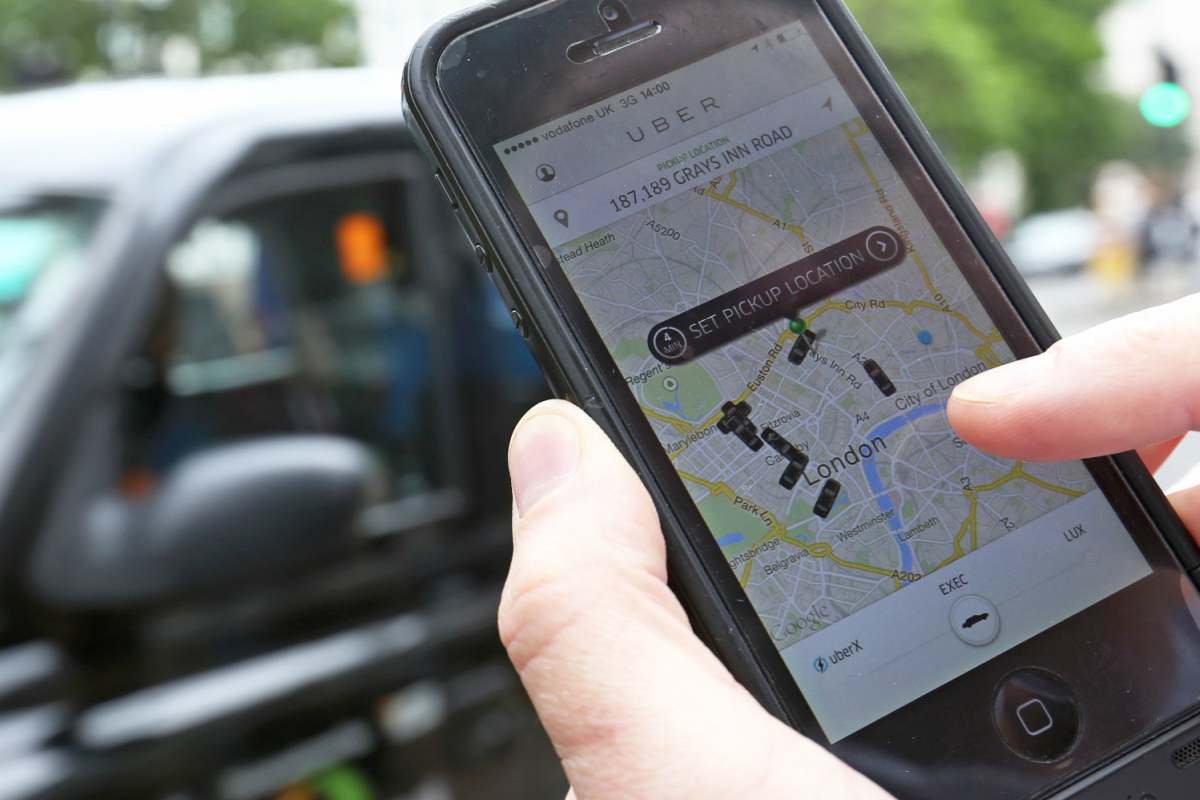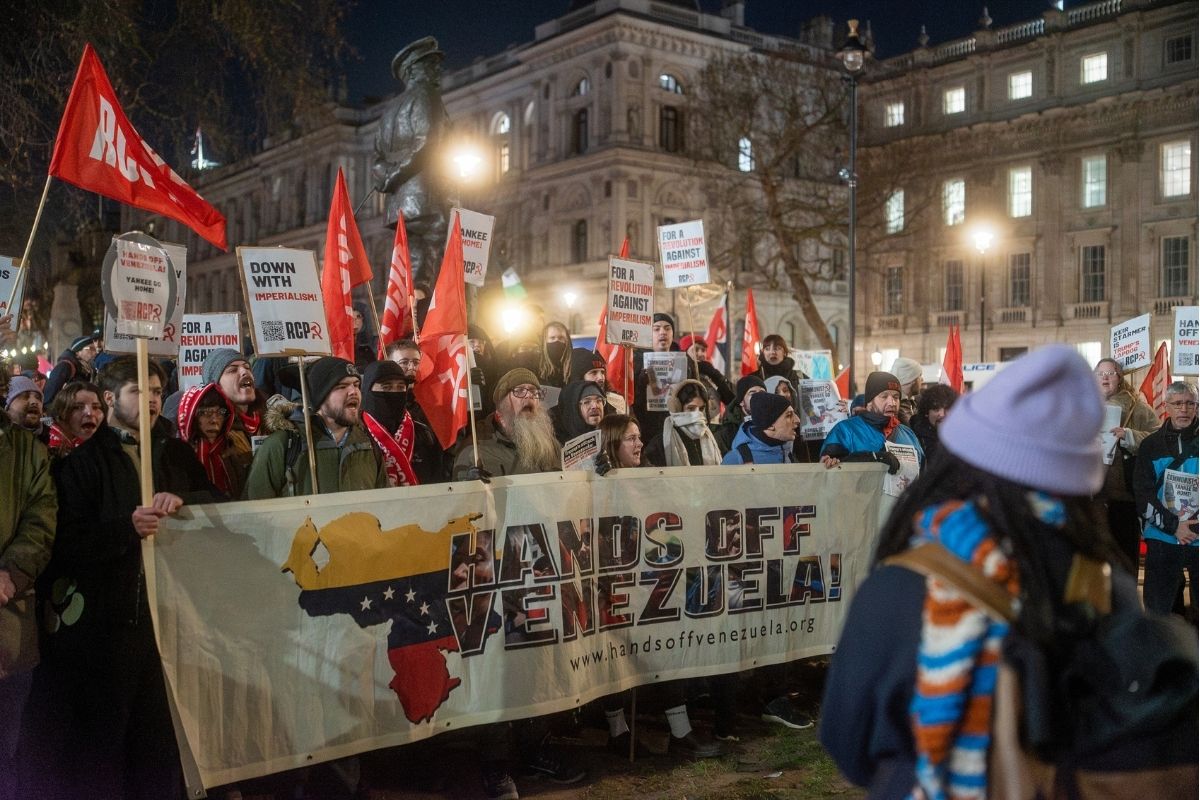Daniel Morley examines the controversy surrounding Transport for London’s recent decision to ban multinational ride-hailing firm Uber. Whilst the bullying corporation is clearly responsible for many misdemeanors when it comes to workers’ rights and passenger safety, however, a blunt ban is not the solution.
Last Friday, 22nd September, millions of Londoners woke up to the shock news that multinational ride-hailing firm Uber had been banned completely by Transport for London (TfL) from operating in the city.
This decision seemingly came from nowhere. Meanwhile, the scale of the news story and reaction (nearly 1 million have signed a petition against Uber’s ban) demonstrate how integral this service has become to London – and many other cities’ – infrastructure.
The ban arises as a result of TfL’s decision not to renew Uber’s five year licence, which expires on 30th September. Although Uber are feigning shock and outrage at the ruling, it should come as no surprise, since they were already warned by TfL four months ago when the license originally ran out. The company was given an extension at the time to change their ways and address the same concerns raised this time round, but arrogantly did nothing.
The ruthless drive for profits
What are these concerns, and do they justify the ban?
TfL has said that Uber is not a ‘fit and proper’ private car-hire operator and exhibits a lack of corporate responsibility regarding potential public safety and security implications. It accuses Uber of failing to report criminal offences of its drivers to the police or of carrying out proper background checks of new drivers.
These failings are quite obviously products of the company’s rapacious search for profit and world domination. Uber is in such a hurry to crush the opposition that it has no time to bother about safety.
Uber’s reputation for extreme aggression in its business practices is well earned. Another ‘concern’ of TfL’s behind this ban regarded the revelation of its sinister ‘Greyball’ software. This software,
“blocks regulatory bodies from gaining full access to Uber’s app for law enforcement duties. Uber has reportedly used Greyball to provide a map of fake cars to users the company thought were regulators. This would prevent them from getting a ride and potentially catching the company violating the law.”
“…when Uber began operations in a new city where operations weren’t clearly legal, the company would appoint a manager in charge of the Greyball program. That manager could draw a geofence around the offices of regulators, watching for users who might open and close the app frequently — actions that could signify that the user was a city employee tasked with keeping an eye on Uber.
“The company would also check user’s credit card information to see if the card was tied to a police credit union, according to the report. Because enforcement officials would buy numerous phones to create multiple Uber accounts for sting operations, Uber would check what cheap cell phones were available in local stores (because city officials did not have sizable budgets) and compare those devices to user accounts.” (The Verge, March 3 2017)
This practice smacks of Volkswagen’s on-board software, which could understand when the car was being tested for emissions, causing the car to change its performance to make it appear as if it polluted less.
What these examples demonstrate is that capitalists will exploit and adapt every single technology to cut corners, to lie and decieve, in order to bring in greater profits at the expense of the public.
Big business bullies
 Uber’s bullying and deceitful behaviour has since been denounced by London Mayor Sadiq Khan, who said that since the ban was announced on Friday Uber has made ‘aggressive threats’ to take TfL to court, “while at the same time briefing journalists that the company wanted to make a deal.”
Uber’s bullying and deceitful behaviour has since been denounced by London Mayor Sadiq Khan, who said that since the ban was announced on Friday Uber has made ‘aggressive threats’ to take TfL to court, “while at the same time briefing journalists that the company wanted to make a deal.”
All of this is small fry however, in comparison to the super exploitation it practices on its army of 40,000 workers in London (not to mention the tens of thousands more in other cities worldwide, of course).
It is well known that Uber, like so many other ‘unicorn’ tech startups, strictly maintains the fiction that its workers are independent contractors: up-and-coming entrepreneurs in their own right. According to Uber, this is a win-win arrangement for both parties, since both gain flexibility from it.
But since Uber controls the app which determines whether or not these drivers are given passengers – and therefore in turn gets to set the pay of Uber drivers – it is obvious that all the benefits of flexibility lie with Uber, and all the disadvantages with its drivers.
For a start, this bogus self-employment, as in so many other industries today, denies Uber drivers holiday and sick pay, effectively lowering their wages and creating a never ending pressure to work and to never take time off even when sick, since every hour not worked is lost pay. This is the very opposite of flexibility.
For instance, two years ago Uber suddenly – and without negotiation (don’t forget, Uber drivers ‘have no boss’ and hence no one is responsible for negotiation) – increased the proportion of each fare to be paid to Uber by the drivers, from 20% of the fare to 25%, which overnight obliged drivers to work an extra 25% to earn the same amount.
According to The Telegraph:
“Steve Garelick, the private hire drivers’ branch secretary for the GMB union, which represents a number of Uber drivers, said drivers were being encouraged to work “excessive and unsafe hours” by the company’s net rates of pay, which the union claims are as little as £5.68 an hour in London, well below the minimum wage, after costs and Uber’s commission are deducted. To earn even £20,000 a year at this rate, a driver would have to work 68 hours a week.”
New technology; same old exploitation
In other words, behind Uber’s shiny image of glorious modernity, lies the same old story of capitalist exploitation, long hours and corner cutting. And as with other cases of corner cutting in the quest for profit, alongside the primary victims of the company’s workers are the general public.
True, the public has enjoyed the app’s convenience and low prices – though this is achieved at the cost of big price increases in the future, when Uber will have eliminated the competition. (In the meantime, the firm can afford to be loss-making, since it has been financed by Wall Street investors, who sit safe in the knowledge that vast profits will accrue in the future.)
But there is also a hidden story of safety being compromised by Uber’s overworking of its employees.
In London – and all over the world – Uber drivers admit to working themselves into the ground to make enough money to pay the bills. 12 hours shifts are common, and some drivers even admit to working 16-18 hours. The Telegraph reports that:
“In June, a London Uber passenger, Emma Davey, was left unconscious when her Uber car crashed and flipped over after the driver allegedly fell asleep.
“Transport for London figures show there has been a 44 per cent rise in the number of casualties involving taxis or private hire vehicles in the capital since Uber launched its main service in London, UberX, in July 2013.
“By September 2015, the taxi and private hire vehicle casualty rate was 102 per cent above the 2005-9 average, according to TfL.”
Uber’s short-sighted exploitation is putting the lives of its drivers, customers and general public in danger. It is fully aware of the dangerously long hours worked by its workers, since they must be logged in to its app to receive any passengers. Thus the app’s data would inevitably show how long its drivers are working.
Uber can pretend this is simply the driver’s own choice, but it is a strange thing when tens of thousands of workers collectively all ‘choose’ to work obscenely long hours.
After having sworn over and over again that its workers are not its workers at all, but are in fact completely independent self-employed contractors, Uber is now pleading against the ban on behalf of what it turns out are apparently entirely dependent employees!
The fat-cat Uber bosses argue that the ban is unjust because it is putting 40,000 drivers out of work in London. Won’t TfL think of the poor drivers! Apparently Uber knew all along that these drivers had nowhere else to go and, like all other wage-slaves, in practice have no freedom.
The limits of a blunt ban
In this ban our sympathies most certainly do not lie with Uber, but instead with its workers. Although TfL’s ban on Uber is entirely justified by Uber’s behaviour, it is not a real solution at all. As with all reformist half-way, compromise solutions, we get the worst of both worlds: workers out of work and no real alternative to capitalist exploitation in public services.
This story demonstrates just how much of a public service Uber has become. By ruthlessly squeezing out other taxi firms, intimidating regulators and tricking them with technological subterfuge, it has made itself a vital part of London’s transport infrastructure.
Those who do the hard work to make this app a reality – its drivers – are now unemployed. They should be re-employed by TfL itself, and the technology of Uber’s app integrated into a transport app made by TfL. This would end the fiction of self-employment, and would represent an enormous victory for the drivers, who could then organise far more easily to collectively bargain. This would also empower workers elsewhere in the so-called gig economy.
For a socialist transport plan
At the same time, it must also be recognised that the TfL management do not have a great recent history of respecting workers jobs, wages, and conditions – hence the strikes seen in the past few years by RMT members against job cuts and unsociable working hours, and by bus drivers in Unite the Union against pay inequality.
Meanwhile, Labour London Mayor Sadiq Khan has previously criticised and condemned Tube workers taking strike action in defence of jobs and safety.
In addition, much of London’s public transport is in fact not publically owned, with a proliferation of PFI (private finance initiative) contracts over the years and a bus service that is in fact run by 18 different private companies.
For these reasons, the demand to bring ride-hailing services into public ownership must be accompanied by additional important demands: to unionise the entire driver workforce; to ensure that the London Mayor and a Labour-led City Hall stand on the side of workers; and to integrate all aspects of TfL – tubes, buses, cabs, bikes, etc. – into a general transport plan under full public ownership and democratic control.
The grovelling response of Uber’s new CEO, who has begged for a meeting with TfL and promised to change Uber’s ways, should be taken not in good faith but as a sign of weakness. It demonstrates just how much these giant corporations depend on the state and their own workers to make their money.
The only way to fight back against the notorious gig-economy and its exploitation of the ‘precariat’, and the obscene inequality that it both depends on and creates, is to fight against capitalism as a whole – for this is what capitalism ultimately means in the 21st Century. We need a bold socialist alternative, not temporary bans here or there.





